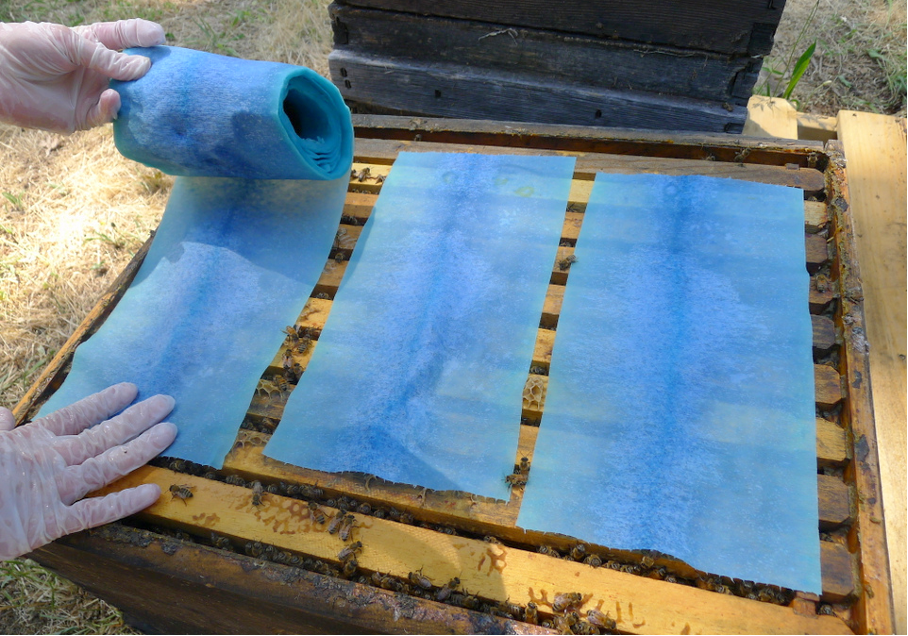 by Véto-pharma
by Véto-pharma This article summarizes and gives an analysis of the recently published study “No evidence to support the use of glycerol–oxalic acid mixtures delivered via paper towel for controlling Varroa destructor (Mesostigmata: Varroidae) mites in the Southeast United States” published by Bartlett et al. in the Oxford Academic Journal, in November 2023.
The article titled “No evidence to support the use of glycerol–oxalic acid mixtures delivered via paper towel for controlling Varroa destructor (Mesostigmata: Varroidae) mites in the Southeast United States” presents a detailed investigation into the efficacy of glycerol-oxalic acid mixtures as a means of managing varroa mites in bee colonies. This study, which involved 129 commercial colonies divided into four treatment groups, aimed to assess the impact of oxalic acid-glycerol shop towels on varroa mite parasitism levels within bee populations. In this study, researchers found no effectiveness in reducing Varroa parasitism in colonies.
The findings of this research not only provide valuable insights into the realm of beekeeping practices but also shed light on a notable disparity between practitioner-led studies and scientifically rigorous evaluations within the field. While many practitioners have advocated for the effectiveness of this method, often sharing their findings through non-academic channels, the results of this study challenge these claims and underscore the critical importance of subjecting beekeeping methodologies to more robust scientific scrutiny.
Furthermore, the study brings attention to the limited support offered by extension services to practitioners actively involved in research efforts, prompting important discussions about the effective dissemination of proven beekeeping techniques. Additionally, it emphasizes the significance of understanding the effectiveness of currently prohibited methods, such as the one under examination, in order to inform the development of legal and efficient slow-release oxalic acid technologies for varroa mite control.
In conclusion, this article highlights the pressing need for fostering collaboration between practitioners and scientists in advancing beekeeping research to ensure thorough evaluation and widespread adoption of successful beekeeping strategies. By addressing potential biases towards practitioner-led studies and advocating for evidence-based practices, the beekeeping community can propel itself towards more effective varroa mite management strategies and sustainable bee health practices.

Related resources:
 by Véto-pharma
by Véto-pharma  by Véto-pharma
by Véto-pharma